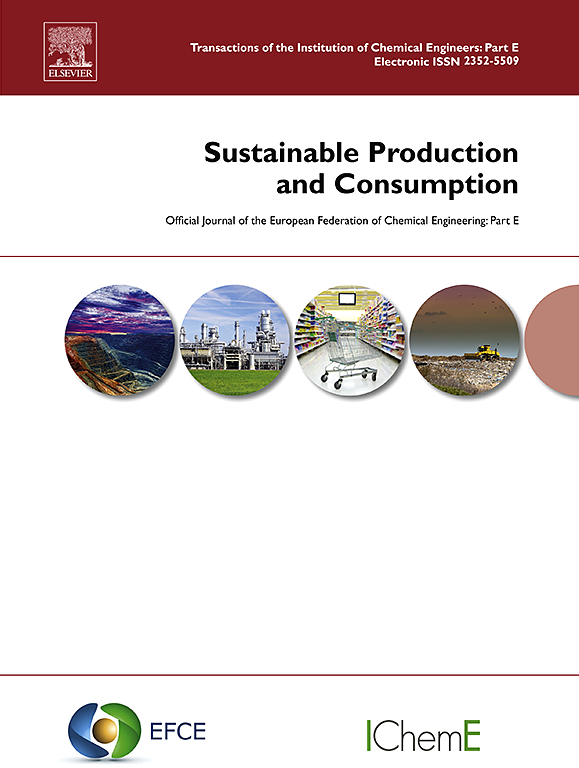Future projections and life cycle assessment of end-of-life tires to energy conversion in Hong Kong: Environmental, climate and energy benefits for regional sustainability
IF 10.9
1区 环境科学与生态学
Q1 ENVIRONMENTAL STUDIES
引用次数: 0
Abstract
The increasing focus on environmental sustainability and the pressing need to mitigate climate change have driven innovative approaches in waste management and energy production. Managing growing waste tires requires strategies that address disposal while contributing to energy generation and climate mitigation. This study employs auto regressive integrated moving average modeling to forecast end-of-life tires generation based on vehicle ownership trends in Hong Kong. A life cycle assessment using the ReCiPe2016 method and a genetic algorithm optimization is applied to assess and optimize the environmental and energy impacts of combined heat and power, gasification, and pyrolysis technologies under two scenarios: the baseline scenario, where 50 % of end-of-life tires are utilized for energy production reflecting current practices, and the enhanced scenario, which increases this to 65 % by including end-of-life tires that would otherwise be improperly disposed of. Although the baseline scenario produced slightly more energy, the optimized use of end-of-life tires in the enhanced scenario prioritized substantial climate benefits through strengthened greenhouse gas mitigation. In the enhanced scenario, greenhouse gas emissions were reduced by approximately 357,825 tons of CO₂-eq annually by 2025, leading to a cumulative reduction exceeding 3 million tons by 2030. Additionally, the enhanced scenario demonstrated improvements in reducing air pollutants such as SO2 and NOx, further contributing to better air quality. The findings highlight the potential of integrating end-of-life tires-to-energy technologies for sustainable end-of-life tires management, providing a framework for policymakers and stakeholders to develop effective strategies that contribute to environmental sustainability and public health. The study's methodologies and insights can be adapted to other regions, facilitating the creation of tailored waste tire management policies globally.
香港废旧轮胎转化为能源的未来预测及生命周期评估:区域可持续发展的环境、气候和能源效益
对环境可持续性的日益关注和缓解气候变化的迫切需要推动了废物管理和能源生产方面的创新方法。管理日益增多的废旧轮胎需要在促进能源生产和减缓气候变化的同时解决处置问题的战略。本研究采用汽车回归综合移动平均模型,根据香港的汽车拥有量趋势,预测报废轮胎的产生量。采用ReCiPe2016方法和遗传算法优化进行生命周期评估,在两种场景下对热电联产、气化和热解技术的环境和能源影响进行评估和优化:在基线方案中,50%的报废轮胎被用于能源生产,这反映了当前的做法;在增强方案中,通过将报废轮胎包括在内,将这一比例提高到65%,否则这些轮胎将被不当处理。虽然基线情景产生的能源略多,但在增强情景中,优化使用报废轮胎通过加强温室气体减排,优先考虑了实质性的气候效益。在强化情景下,到2025年,温室气体排放量每年减少约357825吨CO₂-eq,到2030年累计减少量超过300万吨。此外,增强方案在减少空气污染物(如二氧化硫和氮氧化物)方面也有所改善,进一步改善了空气质量。研究结果强调了将报废轮胎转化为能源技术整合到可持续报废轮胎管理中的潜力,为决策者和利益攸关方制定有助于环境可持续性和公共卫生的有效战略提供了一个框架。该研究的方法和见解可以适用于其他地区,促进全球量身定制的废轮胎管理政策的制定。
本文章由计算机程序翻译,如有差异,请以英文原文为准。
求助全文
约1分钟内获得全文
求助全文
来源期刊

Sustainable Production and Consumption
Environmental Science-Environmental Engineering
CiteScore
17.40
自引率
7.40%
发文量
389
审稿时长
13 days
期刊介绍:
Sustainable production and consumption refers to the production and utilization of goods and services in a way that benefits society, is economically viable, and has minimal environmental impact throughout its entire lifespan. Our journal is dedicated to publishing top-notch interdisciplinary research and practical studies in this emerging field. We take a distinctive approach by examining the interplay between technology, consumption patterns, and policy to identify sustainable solutions for both production and consumption systems.
 求助内容:
求助内容: 应助结果提醒方式:
应助结果提醒方式:


